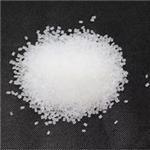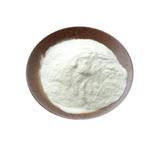Applications of Polyvinylidene fluoride
Apr 19,2022
Polyvinylidene fluoride or polyvinylidene difluoride (PVDF) is a highly nonreactive thermoplastic fluoropolymer produced by the polymerization of vinylidene difluoride.
PVDF is a specialty plastic used in applications requiring the highest purity, as well as resistance to solvents, acids and hydrocarbons. PVDF has low density 1.78 g/cm3 in comparison to other fluoropolymers, like polytetrafluoroethylene.

Properties
PVDF has a glass transition temperature (Tg) of about −35 °C and is typically 50–60% crystalline. To give the material its piezoelectric properties, it is mechanically stretched to orient the molecular chains and then poled under tension. PVDF exists in several forms: alpha (TGTG'), beta (TTTT), and gamma (TTTGTTTG') phases, depending on the chain conformations as trans (T) or gauche (G) linkages. When poled, PVDF is a ferroelectric polymer, exhibiting efficient piezoelectric and pyroelectric properties.These characteristics make it useful in sensor and battery applications. Thin films of PVDF are used in some newer thermal camera sensors.
Unlike other popular piezoelectric materials, such as lead zirconate titanate (PZT), PVDF has a negative d33 value. Physically, this means that PVDF will compress instead of expand or vice versa when exposed to the same electric field.
Applications
PVDF is readily melt-processible and can be fabricated into parts by injection and compression molding. As a result, it is commonly employed in chemical processing equipment such as pumps, valves, pipes, tubes and fittings; sensors and actuators etc.
It has many electronic applications, especially as jacketing materials for plenum-rated cable used in voice and video devices and alarm systems. The low flame spread and smoke generation of PVDF is a prime asset in these applications.
PVDF is gaining acceptance as a binder for cathodes and anodes in lithium-ion batteries, and as a battery separator in lithium-ion polymer systems.
Emerging applications of PVDF include fuel cell membranes, and components for aircraft interiors and office automation equipment.
Synthesis
PVDF (homopolymers and copolymers) is generally synthesized by the free radical polymerization of 1,1-difluoroethylene (CH2=CF2). The polymerization takes place in the suspension or emulsion from 10-150°C and pressure of 10-300 atm. The material obtained is then processed into film or sheets.

Chlorotrifluoroethylene (CTFE) or hexafluoropropene (HFP) are most commonly employed to prepare PVDF copolymers.
PVDF Copolymers with HFP contain increased flexibility over PVDF homopolymer grades
Copolymers with CTFE are among the most flexible PVDF products with excellent low temperature performance and low shrinkage
Copolymers are ideal for wire & cable and tubing applications, which require enhanced flexibility.
- Related articles
- Related Qustion
Efavirenz, earlier known as L-743,726 and DMP-266, is a benzoxazinone compound that was developed by DuPont Merck at Merck Research Laboratories and subsequently co-marketed by DuPont Merck Pharmaceuticals.....
Apr 19,2022Antimicrobial agentBremelanotide injection is used to treat hypoactive sexual desire disorder (HSDD) in premenopausal women who previously had no problems with sexual desire and that occurs in any type of stimulation, situation, or partner.....
Apr 19,2022APIPolyvinylidene fluoride
24937-79-9You may like
- Tris(dibenzylideneacetone)dipalladium: uses and Health effect
May 9, 2024
- polypropylene vs polycarbonate
Mar 18, 2024
- What is sodium chlorite used for?
Mar 16, 2024
Polyvinylidene fluoride manufacturers
- Polyvinylidene fluoride
-

- $6.00 / 1kg
- 2024-05-21
- CAS:24937-79-9
- Min. Order: 1kg
- Purity: More than 99%
- Supply Ability: 2000KG/Month
- Polyvinylidene fluoride
-

- $18.00 / 10kg
- 2024-05-10
- CAS:24937-79-9
- Min. Order: 1kg
- Purity: 99.9
- Supply Ability: 5000
- Polyvinylidene fluoride
-

- $6.00 / 1KG
- 2024-04-28
- CAS:24937-79-9
- Min. Order: 1KG
- Purity: More than 99%
- Supply Ability: 2000KG/MONTH




